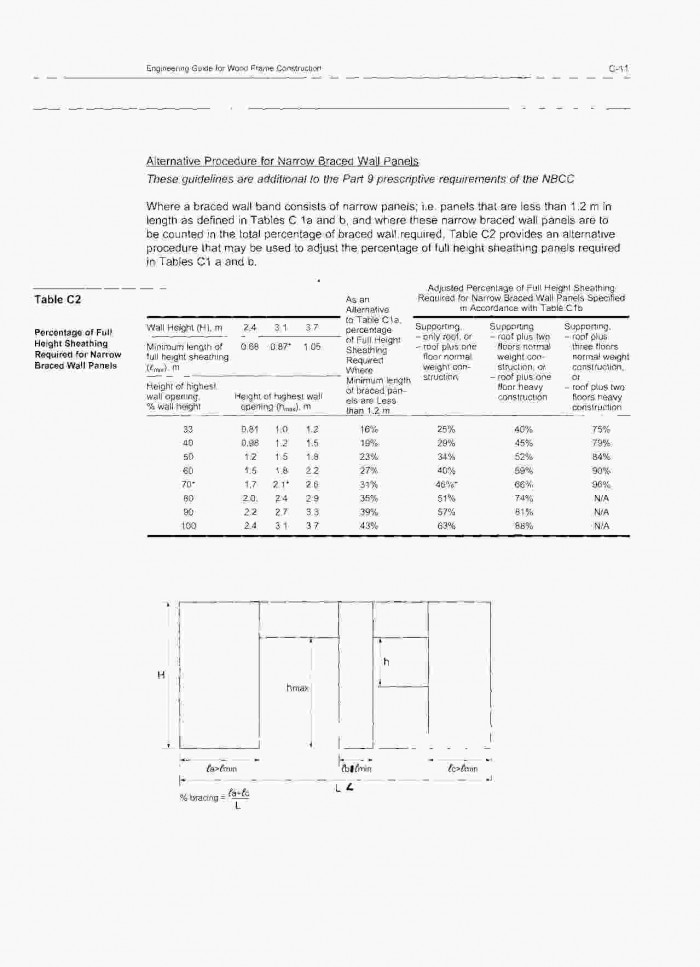Structural Design Restart
The last week has ended on what I hope will be a sustainable up-note on the restart of my design.
I went through my model and adjusted all braced wall panels to be the new minimum lengths dictated by Part C of the Canadian Wood Council Engineering Guide to Wood Frame Construction. This resulted in about a half dozen adjustments to the locations of window and door openings. In most cases it will make very little difference to the aesthetics of the design, but did result in a redesign of where our master bedroom furniture will go and the views we will have.
Fortunately, my original design generally had a lot more braced wall panels than was required by the Part 9 prescriptive requirements. So in a lot of cases, where I had min panel lengths below what the Guide’s Part C required, I was just able to remove these narrow panels from the braced wall band count. This is allowed as long as the first panel starts within 2.4m from the band edge and no panel is spaced more than 6.4m from the next band.
I also found that because the Guide measures the band lengths from the centre line (Part 9 measure from where the centre line intersects with the outside edge of a perpendicular band), you end up needing a smaller overall length of braced wall panels within the band (Guide uses same general percentages of 40% first floor and 25% second floor). You can further adjust this by making a perpendicular band thickness wider than what you need (as long as you stay within the 1.2m max). This further reduces the length of the original band and the total panel length needed in that band. This was a helpful workaround that I utilized in a few locations where I would have otherwise been a few inches short for my totals.
I also had to utilize the alternative procedure for Narrow Braced Wall Panels (Table C2 of the Guide – fig 1 below) for 5 locations where I could not fit in the min sized regular 47.25″ panel required by Part C. This allows for a shorter panel lengths (34.25″ for a wall up to 3.1m tall) but then requires a higher percentage of the band to contain panels (66% for a second floor with a standard height exit door vs the 25% that would be required if all panels were the min 47.25″ length). Fortunately, I was able to meet these increased panel densities on these particular walls.
I now have to update all drawings to reflect the new window and door locations and draw a much more intensive set of drawings showing the details of the braced wall bands and panels. Tacoma (my structural engineer out of Ontario) is determining to which standard they will finish the rest of the structural design to (Part 4 of the Code or Part B/C of the Guide) and I hope to hear back from them on this by tomorrow.
I also heard back this morning from a past employee of Tacoma that now works for Stantec at their Victoria office. He has agreed to perform all required site structural inspections as a sub contractor to Tacoma. This was excellent news and as he previously worked with Tacoma, will be able to seamlessly fit into the mix.
My next step is to get confirmation from Tacoma that the ICF and Floor Truss design is still valid under the new rules and then order those materials so they can arrive from back east in time for construction.
As always – thanks for stopping by! We have reached over 9000 visits to the blog, you all continue to amaze me at your interest in this project.

